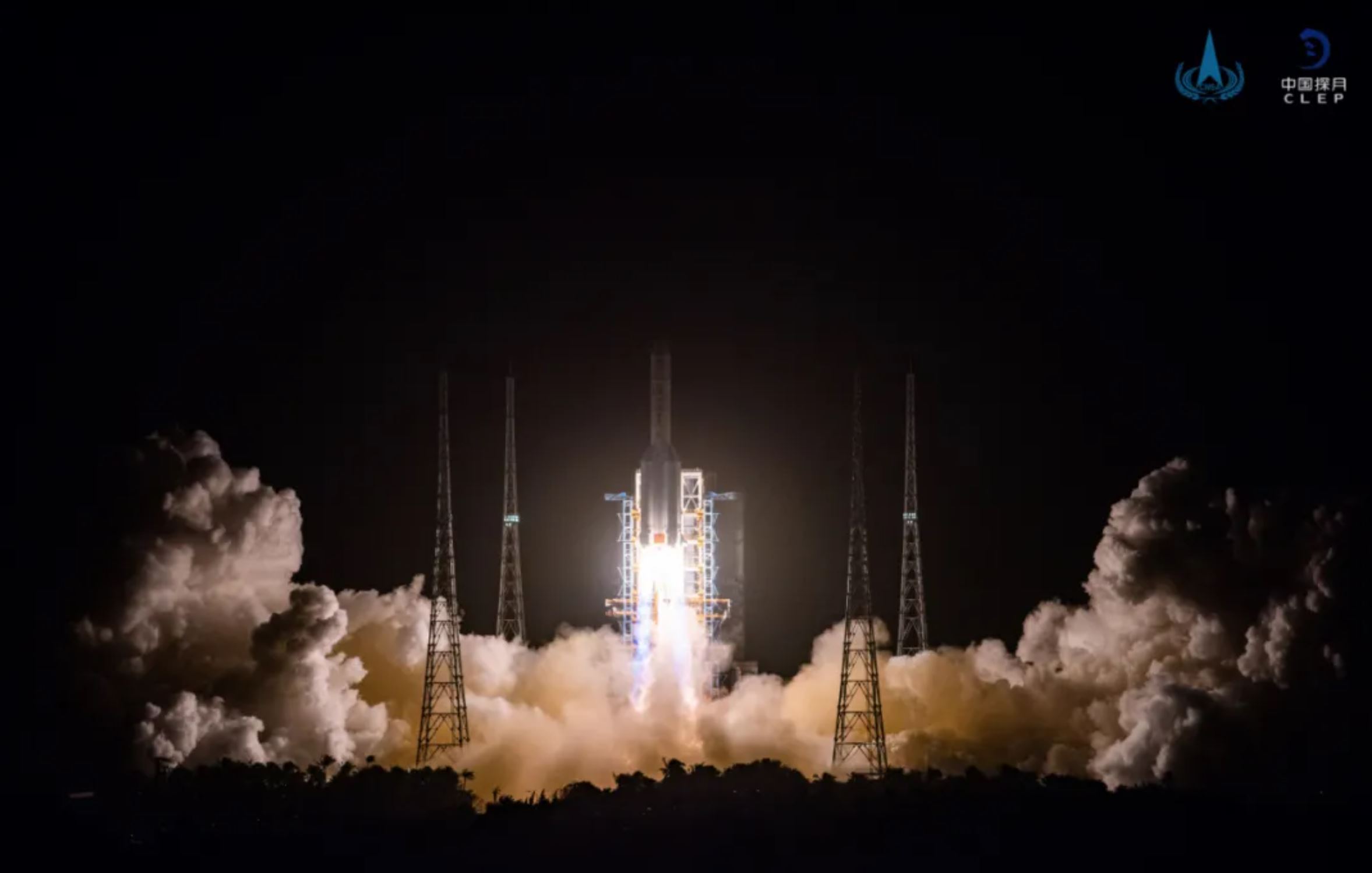Products You May Like
CASC announces successful tests of a range of liquid and solid rocket engines for future projects, commercial actors look to reusability
HELSINKI — China’s space contractor has announced progress on rocket engines designed for major space missions, including a new engine for future lunar missions.
The China Aerospace Science and Technology Corporation (CASC) announced Jan. 11 that progress on key technologies for a 220-ton thrust, liquid hydrogen-liquid oxygen staged combustion cycle engine had been made.
The engine is designed to power the second stage of the Long March 9 rocket, a super heavy-lift launch vehicle being developed to launch major missions, including supporting future crewed missions to the moon. It follows progress on new engines for the first stage.
The Long March 9 is being developed by the China Academy of Launch Vehicle Technology (CALT) under CASC. A first flight is expected around 2030 to facilitate major space infrastructure projects.
The new staged combustion cycle engine is an upgrade to CASC’s YF-77 liquid hydrogen-liquid oxygen gas-generator oxygen engine, providing greater thrust and efficiency. Progress includes successful hotfire tests of the preburner and propellant turbopumps and combined testing.
Wang Weibin, deputy designer of the Long March 5 rocket with the Academy of Aerospace Propulsion Technology, a CASC subsidiary, told state media that the 220-ton thrust engine is based on technologies from the YF-77 but features improvements in materials and processes.
A pair of YF-77s, less complex engines designed for reliability, power the core stage of the Long March 5. The 57-meter-long, 870-ton rocket is currently China’s largest and most powerful launch vehicle. It last year launched the Tianwen-1 mission to Mars and Chang’e-5 lunar sample-return spacecraft.
One set of dimensions for the Long March 9 state it will be 93 meters long, feature a 10-meter-diameter core, have a mass at liftoff of 4,140 metric tons. It will have four five-meter-diameter side boosters comparable to a Long March 5 first stage. The Long March 9 is designed to be capable of lifting 140 tons to LEO or 50 tons to trans lunar injection.
The first stage of the launcher will use four, dual nozzle 500 ton-thrust engines sometimes referred to as the YF-130. The assembly of the first YF-130 kerosene-liquid oxygen engine was completed in 2019 and ready for hotfire test operation, according to Hui Chen of the Xi’an Aerospace Propulsion Institute.
At the same time a further heavy lift launch vehicle, using three, five-meter-diameter first stage cores and clusters of YF-100K engines, is also being proposed by CALT for use as a human-rated launcher for crewed lunar missions.
Space station missions soon
The YF-77 this week completed a 500-second hotfire test to further verify its reliability. The second, YF-77-powered Long March 5B rocket will launch the core module for China’s space station in the coming months.
A YF-77 turbopump failure in 2017 led to the loss of the second Long March 5 and its large communications satellite payload. The failure grounded the rocket for more than 900 days as engineers worked to identify and address the issue. This also delayed the Long March 5B variant test launch and subsequently impacted China’s space station project.
A report last week stated that the second Long March 5B would soon undergo final reviews in Tianjin before shipping to the Wenchang Satellite Launch Center.
CASC solid rocket engine
CASC announced in December a successful 130-second hotfire test of a three-segment, 3.2-meter-diameter solid rocket motor with a thrust of 260 tons. The new engine was developed by the Academy of Aerospace Solid Propulsion Technology near the northern city of Xi’anand could be applied to support deep space exploration activities.
Ren Quanbin, a representative from the academy, told state media that work would move on to a 400-to-500-ton thrust solid rocket engine.
CASC has so far developed a single solid rocket, the Long March 11. Sister state-owned conglomerate CASIC is developing its own Kuaizhou series of solid launchers of varying sizes and commercializing them through spinoff company Expace.
Chinese NewSpace tests
In the Chinese NewSpace arena Beijing Deep Blue Aerospace Technology Co., Ltd., conducted a wet dress rehearsal in December of a 7.3-meter-high “Nebula-M” technology verification test vehicle.
Deep Blue Aerospace says it plans to soon follow up with static fire tests and subsequent hop tests for its reusable Nebula-2 rocket.
The firm is developing the expendable 2.25-meter-diameter Nebula-1 and reusable 3.35-meter-diameter Nebula-2 liquid launchers. These are to be capable of lifting 500 kilograms to 500 km Sun-synchronous orbit and 4,500 kilograms to LEO respectively.
Fellow Chinese NewSpace outfit Linkspace succeeded with a launch and landing reaching an altitude of 300 meters in August 2019. The company has however been quiet ever since.
Beijing-based iSpace plans to carry out hop tests with a test version of a first stage of its Hyperbola-2 methalox rocket during 2021.
